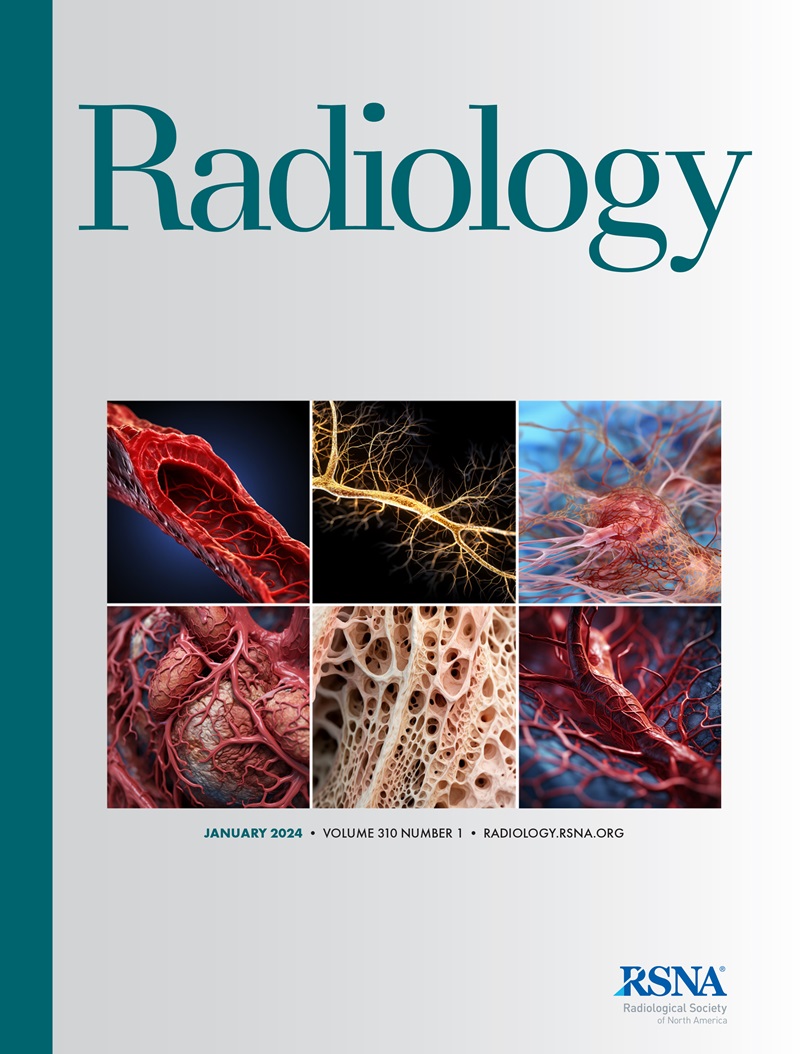Guanda Qiao, Chengyan Chu, David Gulisashvili, Shalini Sharma, Lukasz Kalkowski, Lucia Fadon-Padilla, Josh Ostovitz, Wojciech G Lesniak, Daniel Deredge, Maciej Walczak, Lei Zhang, Anna Jablonska, Yajie Liang, Dheeraj Gandhi, Piotr Walczak, Miroslaw Janowski
下载PDF
{"title":"一种安全的MRI和pet引导下增加血脑屏障渗透性的方法。","authors":"Guanda Qiao, Chengyan Chu, David Gulisashvili, Shalini Sharma, Lukasz Kalkowski, Lucia Fadon-Padilla, Josh Ostovitz, Wojciech G Lesniak, Daniel Deredge, Maciej Walczak, Lei Zhang, Anna Jablonska, Yajie Liang, Dheeraj Gandhi, Piotr Walczak, Miroslaw Janowski","doi":"10.1148/radiol.243396","DOIUrl":null,"url":null,"abstract":"<p><p>Background Given the current lack of widely adopted strategies for facilitating drug penetration into the brain, developing new techniques to increase blood-brain barrier (BBB) permeability is essential to address the increasing burden of central nervous system disorders. Osmotic blood-brain barrier opening (OBBBO), achieved through intra-arterial delivery of 25% mannitol to the cerebral vasculature, is a pioneering strategy demonstrating both safety and partial efficacy. Purpose To investigate the potential of 25% mannitol with 4% NaCl, a combination that doubles the osmotic power, to safely increase OBBBO efficacy. Materials and Methods To visualize penetration into the brain, OBBBO with intra-arterial, intravenous, or intraperitoneal infusion of molecules was performed in mice (<i>n</i> = 44). Brain penetration of small molecules (gadolinium-based contrast agent) and the safety of the infusion procedure were assessed via MRI and histologic examination. Brain penetration of large molecules (zirconium 89-radiolabeled antibodies) was assessed via PET imaging. A head-to-head comparison was performed of brain penetration of both these molecules using the standard approach (25% mannitol) versus the combination of 25% mannitol with 4% NaCl. The Wilcoxon signed rank test, Mann-Whitney <i>U</i> test, and mixed-model analysis were used for the statistical analyses. Results The findings showed robust OBBBO across the entire targeted hemisphere of mouse brains following administration of 4% NaCl in 25% mannitol (<i>n</i> = 9), surpassing that achieved with 25% mannitol alone (<i>n</i> = 8) (ratio of OBBBO area to intact BBB area, 1.99 ± 0.17 vs 1.41 ± 0.15; <i>P</i> < .001). Follow-up MRI and postmortem histologic examination confirmed the safety of this procedure. PET imaging revealed that brain uptake of radiolabeled antibodies was significantly improved using this new method. Conclusion Combining 4% NaCl with 25% mannitol showed promise for improving the safe delivery of therapeutic agents to the brain through the endovascular route. © RSNA, 2025 <i>Supplemental material is available for this article.</i> See also the editorial by Clement and Gaultier in this issue.</p>","PeriodicalId":20896,"journal":{"name":"Radiology","volume":"316 3","pages":"e243396"},"PeriodicalIF":15.2000,"publicationDate":"2025-09-01","publicationTypes":"Journal Article","fieldsOfStudy":null,"isOpenAccess":false,"openAccessPdf":"https://www.ncbi.nlm.nih.gov/pmc/articles/PMC12501621/pdf/","citationCount":"0","resultStr":"{\"title\":\"A Safe MRI- and PET-guided Method for Increasing Osmotic Blood-Brain Barrier Permeability.\",\"authors\":\"Guanda Qiao, Chengyan Chu, David Gulisashvili, Shalini Sharma, Lukasz Kalkowski, Lucia Fadon-Padilla, Josh Ostovitz, Wojciech G Lesniak, Daniel Deredge, Maciej Walczak, Lei Zhang, Anna Jablonska, Yajie Liang, Dheeraj Gandhi, Piotr Walczak, Miroslaw Janowski\",\"doi\":\"10.1148/radiol.243396\",\"DOIUrl\":null,\"url\":null,\"abstract\":\"<p><p>Background Given the current lack of widely adopted strategies for facilitating drug penetration into the brain, developing new techniques to increase blood-brain barrier (BBB) permeability is essential to address the increasing burden of central nervous system disorders. Osmotic blood-brain barrier opening (OBBBO), achieved through intra-arterial delivery of 25% mannitol to the cerebral vasculature, is a pioneering strategy demonstrating both safety and partial efficacy. Purpose To investigate the potential of 25% mannitol with 4% NaCl, a combination that doubles the osmotic power, to safely increase OBBBO efficacy. Materials and Methods To visualize penetration into the brain, OBBBO with intra-arterial, intravenous, or intraperitoneal infusion of molecules was performed in mice (<i>n</i> = 44). Brain penetration of small molecules (gadolinium-based contrast agent) and the safety of the infusion procedure were assessed via MRI and histologic examination. Brain penetration of large molecules (zirconium 89-radiolabeled antibodies) was assessed via PET imaging. A head-to-head comparison was performed of brain penetration of both these molecules using the standard approach (25% mannitol) versus the combination of 25% mannitol with 4% NaCl. The Wilcoxon signed rank test, Mann-Whitney <i>U</i> test, and mixed-model analysis were used for the statistical analyses. Results The findings showed robust OBBBO across the entire targeted hemisphere of mouse brains following administration of 4% NaCl in 25% mannitol (<i>n</i> = 9), surpassing that achieved with 25% mannitol alone (<i>n</i> = 8) (ratio of OBBBO area to intact BBB area, 1.99 ± 0.17 vs 1.41 ± 0.15; <i>P</i> < .001). Follow-up MRI and postmortem histologic examination confirmed the safety of this procedure. PET imaging revealed that brain uptake of radiolabeled antibodies was significantly improved using this new method. Conclusion Combining 4% NaCl with 25% mannitol showed promise for improving the safe delivery of therapeutic agents to the brain through the endovascular route. © RSNA, 2025 <i>Supplemental material is available for this article.</i> See also the editorial by Clement and Gaultier in this issue.</p>\",\"PeriodicalId\":20896,\"journal\":{\"name\":\"Radiology\",\"volume\":\"316 3\",\"pages\":\"e243396\"},\"PeriodicalIF\":15.2000,\"publicationDate\":\"2025-09-01\",\"publicationTypes\":\"Journal Article\",\"fieldsOfStudy\":null,\"isOpenAccess\":false,\"openAccessPdf\":\"https://www.ncbi.nlm.nih.gov/pmc/articles/PMC12501621/pdf/\",\"citationCount\":\"0\",\"resultStr\":null,\"platform\":\"Semanticscholar\",\"paperid\":null,\"PeriodicalName\":\"Radiology\",\"FirstCategoryId\":\"3\",\"ListUrlMain\":\"https://doi.org/10.1148/radiol.243396\",\"RegionNum\":1,\"RegionCategory\":\"医学\",\"ArticlePicture\":[],\"TitleCN\":null,\"AbstractTextCN\":null,\"PMCID\":null,\"EPubDate\":\"\",\"PubModel\":\"\",\"JCR\":\"Q1\",\"JCRName\":\"RADIOLOGY, NUCLEAR MEDICINE & MEDICAL IMAGING\",\"Score\":null,\"Total\":0}","platform":"Semanticscholar","paperid":null,"PeriodicalName":"Radiology","FirstCategoryId":"3","ListUrlMain":"https://doi.org/10.1148/radiol.243396","RegionNum":1,"RegionCategory":"医学","ArticlePicture":[],"TitleCN":null,"AbstractTextCN":null,"PMCID":null,"EPubDate":"","PubModel":"","JCR":"Q1","JCRName":"RADIOLOGY, NUCLEAR MEDICINE & MEDICAL IMAGING","Score":null,"Total":0}
引用次数: 0
引用
批量引用

 求助内容:
求助内容: 应助结果提醒方式:
应助结果提醒方式:


